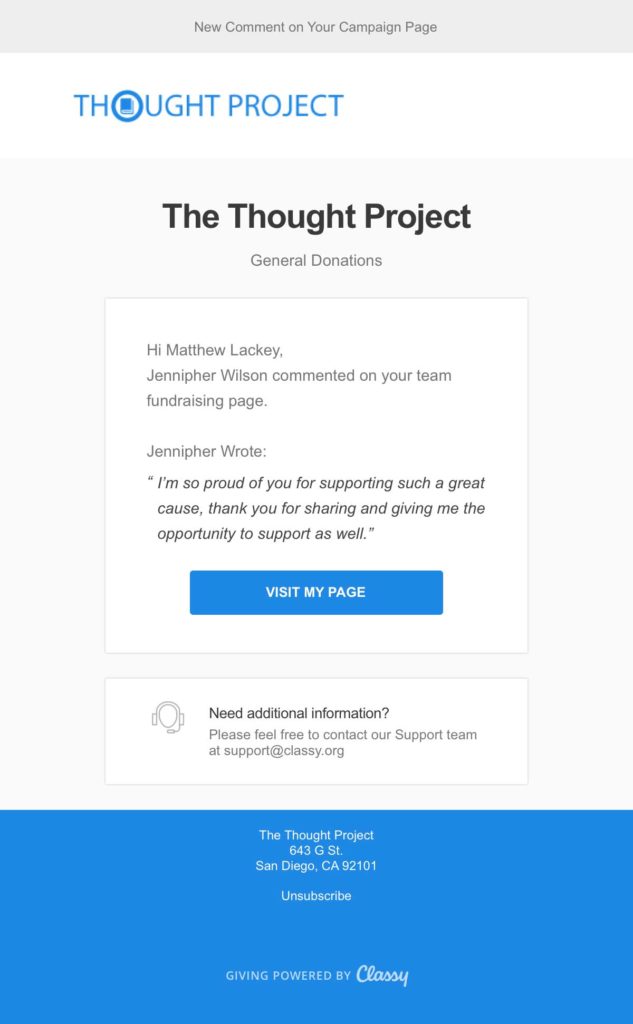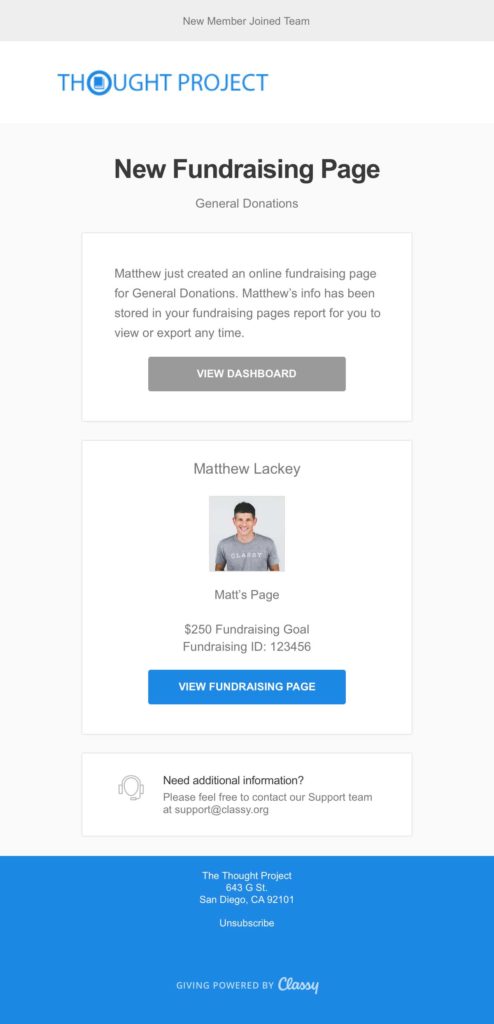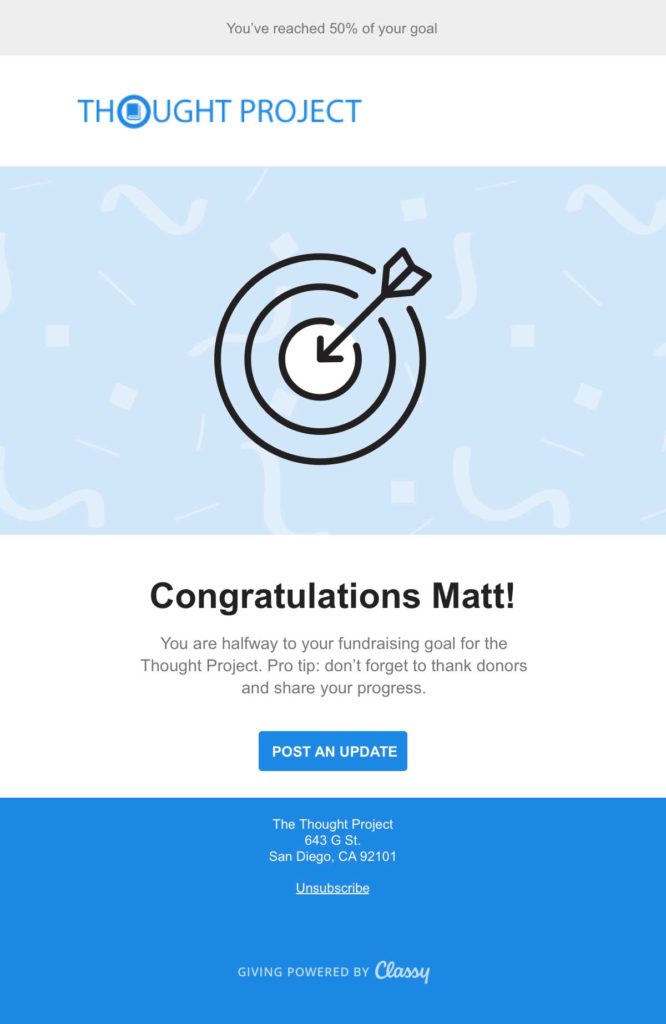3 Types of Email to Power Your Fundraising Campaign

Just like in any relationship, the rapport you have with each of your supporters hinges on a series of touch points. The key to successful donor relationships is to strike the right balance of engagement.
While email is only one component of your supporters’ overall experience with your fundraising campaigns, it’s the primary way they expect to receive communications from your organization. This post outlines three email types that will help you strengthen a supporter’s connection to your cause.
1. Transactional Emails
Transactional emails are sent automatically as a result of a supporter’s specific action. These emails serve as simple gestures to demonstrate that the donor’s activity, however small, is appreciated.
Examples of this type of email message include donation receipts, recurring donation notices, chargebacks, and eCards.
Transactional emails can also be set up to notify fundraisers of certain activities, such as the following:
Fundraiser Notifications
These notifications are automatically sent to update the appropriate party when a certain action has taken place. These messages provide insights that help you stay up to date and continue to engage in real time. Examples include:
Notifications To:
- Individual fundraisers or teams when a donation or comment is made
- Team captains when a new member joins or the team goal is reached
In addition to sending specific messages to supporters and fundraisers, you can also set up notifications for key campaign stakeholders.

This example updates a fundraiser when a comment is made to their campaign page.
Overall Fundraising Campaign Notifications
This type of email is triggered whenever an update is made to the campaign or a comment is made on activity. This messaging keeps all admins in the know about key information regarding the overall campaign.

In this email, an admin at The Thought Project is notified when Matthew creates his fundraising page.
2. Fundraising Campaign Emails
Your organization is probably very familiar with campaign emails, which include blasts to large lists of supporters. Give an update on your campaign’s progress, or make a mass appeal to support your campaign.
Email Blasts
This type of message goes out to your campaign’s master list of supporters. This is particularly handy for information that you need to get out right away to a vast majority of your community. For example, you might send an email blast if you need to:
- Show progress toward your campaign goal
- Announce a matching period
- Remind supporters of what’s at stake
- Create a sense of urgency around a deadline
Create a sense of urgency by updating your supporters when time is running out.
Segmentation
Nonprofits use email to incite action among supporters, which makes targeted messaging all the more important. When you segment your supporters, you acknowledge their history with your organization. This approach is much more likely to resonate with them and encourage the action you’d like them to take next.
With Classy, you can easily segment your peer-to-peer campaign supporters into donors, fundraisers, or team captains.
3. Fundraiser Automation for Peer-to-Peer Fundraising
When it comes to peer-to-peer fundraising, email is the primary tool used to keep fundraisers in the know about their campaigns. Automated emails about their latest activity empower them to more effectively engage their network and raise more money, while saving your organization time and effort.
Encouragement Emails
An encouragement email is an effective way to motivate and delight your fundraisers and nurture their success. For example, to update and excite them, you can automatically send:
- Percent-to-goal messages to let fundraisers know when they’ve reached a certain amount of their goal. This will motivate them to work towards the next milestone.
- Dollar-amount milestone emails to acknowledge success and congratulate fundraisers when they’ve qualified for a specific perk.

Milestone emails help to motivate your fundraisers as they approach their goal.
These email types all serve one purpose: relationship-building. Each strategic message has the power to strengthen individual connections to your cause. It’s time to leave impersonal one-size-fits-all communications in the dust and send informed and genuine messages that activate.
Read Next: 4 New Emails in the Classy Fundraising Suite

10 #GivingTuesday Email Templates





